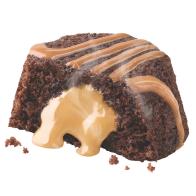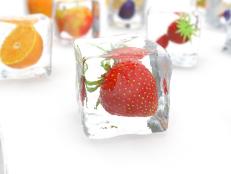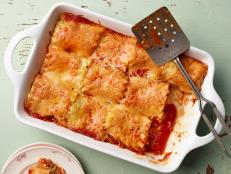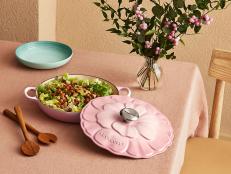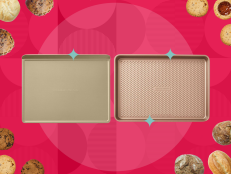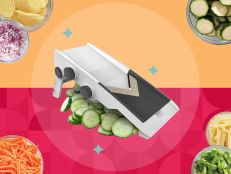8 Foods You Should Be Keeping in Your Freezer
Your freezer is for more than preserving foods — it can enhance them, too!

StefaNikolic
If your freezer has become a black hole of half-eaten bags of vegetables and leftovers, it's time to rethink how you're using the highly versatile and underutilized appliance. While freezers are mainly used for preserving foods, they can also aid in elevating certain ingredients and dishes to make better meals. We talked with Food Network Kitchen staffer Michelle Warner about which foods benefit from some time spent in the freezer!
Tofu

by [D.Jiang]
Achieving tofu with a hard, crunchy exterior and a soft, pillow-like interior requires slightly more nuance than just tossing it into the air fryer. Much like other foods on our list, moisture content is the vital factor separating perfectly cooked tofu from its mushy counterparts. When frozen, additional and unwanted moisture is extracted, leaving a piece of tofu that is primed for roasting, frying or grilling. You’ll potentially risk some of the tofu’s structure, but once crisped to excellence, we think you’ll hardly notice.
Fresh Pasta

Nico De Pasquale Photography
Any time you’re making something from scratch, you run the risk of uncontrollable variables modifying your ideal final product. Take fresh pasta, which is relatively easy to make at home but has the potential of resulting in varying consistency depending on the experience of the person making it and the environment they are in. While you’ve seen suggestions of hanging your pasta to dry, we recommend tossing it into the freezer. Once again, this has to do with moisture content. You’ll quickly dry out any unneeded water, creating a consistency that makes cooking significantly easier. Quick tip: If you’re planning on cooking the pasta that day, you can place it open in the freezer. For long-term storage, pasta should be kept in an airtight container.
Fruit

Ray Kachatorian
If you’re plagued by fruit-focused desserts that are runny and lacking structure or watered-down smoothies that can’t seem to achieve a thick, sturdy consistency, we might have your answer. Once frozen, fruit will lose its cellular structure, which sounds frightening. Rather, the supple texture desired from fresh fruit will be replaced by one that is ideal for achieving silk, luscious smoothies and rich, thick pie fillings. Just be sure to spread your fruit out when freezing, so everything doesn’t clump together.
Flour

Tobias Titz
Pest-infested flour is an unfortunate possibility, whether you just picked it up from the store or have bags stored in your pantry. Kill off unwanted bugs by sticking your flour in the freezer for 24 hours. Since there is virtually no water content in flour, this will not affect the structure of the cooking agent. This trick holds true for grains, too.
Lasagna

Qwart
If you’ve reheated a piece of frozen casserole or lasagna and wondered why it seems to taste better than the fresh-from-the-oven dinner you had previously, it’s not just because you’ve finally separated yourself from all the hard work! It’s actually all thanks to science. Once frozen, the flavors are given a little more time to come together, and since you’ve already cooked the meal, you don’t have to worry about breaking down the structure of your food while freezing (you already did that in the oven!). In heating it up again, you’re actually getting a flavor profile that is potentially richer and more complete than when you first cooked it.
Pie and Quiche Crust

DNY59
Buttery crust that holds its structure yet flakes as you dive your fork through the base is the mark of a really well-baked dish. But that texture doesn’t just come from mixing the right ingredients with the proper tools (though, that certainly helps) — it also has a lot to do with temperature. You probably know that working with cold butter is imperative, but it’s also important to keep rolled-out crust cold until the moment you place it into the oven. An easy rule of thumb? Store any crust, especially for quiches, in the freezer before baking. This will keep the butter from quickly melting and will help ensure a flaky, layered crust.
Pizza Dough

Image Source RF/Chad Springer
Reaching unimaginably hot temperatures required to bake pizza is more accessible than ever, thanks to the growing popularity of at-home pizza ovens like the Ooni. Make sure your homemade crust is on par with these new appliances by storing it in the freezer before your next homemade pizza night. This will make sure the yeast won’t continue to grow, and once defrosted (we recommend 24 hours before you need it), you’ll have a crust with a well-developed yeast flavor and ideal consistency.
Related Content:















